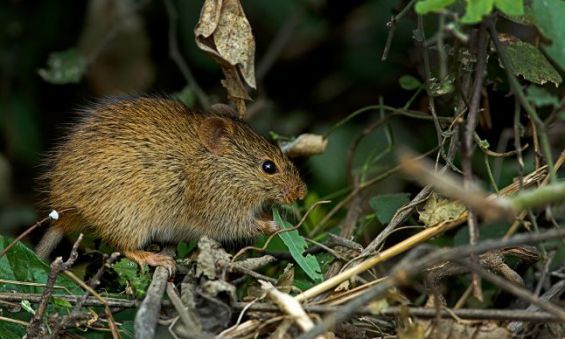Paleontologists from Morocco and Spain discovered Africa’s last representative of the Golunda genus, a rodent species that mainly lives in India. The newly discovered extinct species lived about 2.6 million years ago in eastern Morocco, where its fossils were excavated.
In a study entitled «Golunda aouraghei, SP. NOV., The Last Representative of the Genus Golunda in Africa» and published by the Journal of Vertebrate Paleontology, reserchares explain that the ancient rodent, they named «Golunda aouraghei», weighed between 150-170 grams.
It is larger than its Indian cousin Golunda ellioti, who only weighs 60 grams. The latter, also known as the Indian bush rat, is the only living representative of the Golunda genus.
«It is a large species of Golunda representing the youngest occurrence of the genus in Africa», reserachers wrote in their study.
A Moroccan rodent with ancestors in Asia
Through this discovery, researchers concluded that in the Guefait site in the plio-pleistocene basin of Ain Beni-Mathar this rat lived and adapted to the aridity of the area.
«Its dental morphology, for example, reflects its adaptation to a more abrasive diet than that of its ancestor, due to the increased aridity at the end of the Pliocene and beginning of the Pleistocene in North Africa», Pedro Pinero from the Faculty of Natural Sciences and the Museum of the National University of La Plata (Argentina) told EFE.
 ESEM photographs of Golunda aouraghei, sp. nov., from Guefaït-4. / DR
ESEM photographs of Golunda aouraghei, sp. nov., from Guefaït-4. / DR
The researcher who heads the study indicates, however, that even after adapting to the aridity of the region, the Golunda aouraghei could not survive for too long and went extinct. The same study reveals also that the rat made its way to North Africa through the Arabian peninsula.
«We believe that this genus is native to northern India, and that during the Pliocene it managed to reach Africa by crossing the two extremes of the Red Sea (Sinai Peninsula and the Mandeb Strait), and managed to settle both north and east of the continent», Pinero explained. Indeed, fossils of the rodent were discovered in both Algeria and Ethiopia before.
The studied remains from Morocco were recovered from sediment collected at the Guefait-4 site during excavation campaigns that took place in 2015, 2017 and 2018.
The fossils of the ancient Moroccan rat are currently kept at the Musée Universitaire d’Archéologie et du Patrimoine in Oujda.





 chargement...
chargement...













